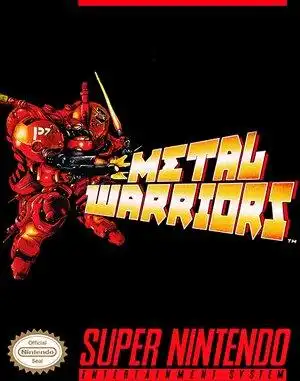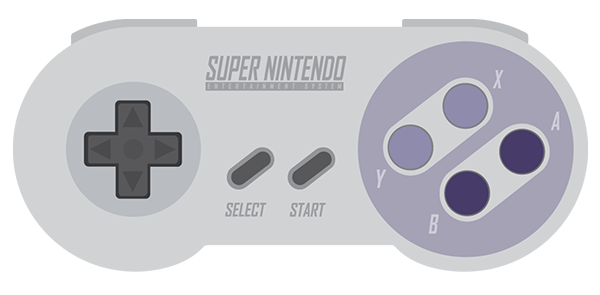Remember when LucasArts wasn't just about point-and-click adventures? Long before they were battling Sith Lords or exploring ancient temples, the team behind Zombies Ate My Neighbors delivered one of the most intense and unique mech action games on the Super Nintendo: Metal Warriors SNES. Often overshadowed and released in limited numbers, this game is a true cult classic that deserves a spot in any retro gamer's heart.
Forget everything you thought you knew about SNES mech games. While it shares visual similarities with Konami's Cybernator (or Assault Suits Valken in Japan), Metal Warriors brings its own flavor, innovation, and a surprising amount of depth.
What is Metal Warriors? The Premise
Set in the far-off year 2102 (which felt futuristic back in 1995!), Metal Warriors throws you into a desperate conflict between the United Earth Government and the villainous Dark Axis, led by the appropriately named Venkar Amon. Earth's last hope? A small, elite group of mercenary mech pilots known as the Metal Warriors.
You step into the cockpit (or rather, the pilot suit) of Lieutenant Stone, tasked with undertaking nine challenging missions across varied environments. It's a side-scrolling action-platformer at its core, but the mechanics elevate it far beyond a simple run-and-gun.
More Than Just a Mech Suit
One of the coolest features that sets Metal Warriors apart is the ability to eject from your mech. If your suit is critically damaged, or if you need to squeeze through a small vent or activate a switch, you can pop out as the vulnerable but nimble pilot, Stone. Armed only with a small pistol and a jetpack, navigating outside the safety of your armor is risky business – enemy mechs can squish you, and worse, they can even steal your abandoned ride! This mechanic adds a strategic layer, forcing you to think about survival even when your primary vehicle is down.
But you're not stuck with just one type of mech. The game features six distinct Metal Warrior suits, each with its own weapons, abilities, and feel:
- Nitro: Your standard, versatile suit.
- Havoc: A heavier suit with powerful weapons.
- Prometheus: A slow but heavily armored brute.
- Spider: Can cling to and climb walls and ceilings.
- Drache: A flying unit offering high mobility.
- Ballistic: Equipped with a powerful mortar.
Finding and switching between these suits during missions (or in the fantastic multiplayer mode) is key to tackling different challenges and discovering alternate paths.
The LucasArts Touch
Developed by the same talented folks at LucasArts who gave us Zombies Ate My Neighbors, Metal Warriors benefits from their knack for tight gameplay and distinctive visuals. The game uses an improved version of the ZAMN engine, resulting in smooth animation and detailed sprites.
The presentation is top-notch for the era. While compared to Cybernator, Metal Warriors boasts a more vibrant color palette and diverse locations, from lush forests to icy fortresses. The anime influence is clear, especially in the beautiful, non-voiced cutscenes that advance the surprisingly engaging plot between missions. It felt like playing through an interactive mecha anime OVA.
Facing the Challenge Head-On
Let's be clear: Metal Warriors is tough. Really tough. It's arguably more challenging than its perceived rival, Cybernator. Levels are large and complex, enemies hit hard, and health packs are scarce. The lack of a password or battery save system means you have to complete long, grueling missions in a single sitting. This was a common criticism back then and remains the game's biggest hurdle for modern players used to save states. It demands patience, skill, and a willingness to learn enemy patterns and level layouts through trial and error.
Hidden Gem Status & Collector's Item
Despite critical acclaim at the time, Metal Warriors had a limited release published by Konami (ironically, the publisher of Cybernator). This scarcity, combined with its high quality and unique features like the excellent split-screen deathmatch mode, has elevated it to "hidden gem" status among SNES enthusiasts.
Unfortunately for those looking to collect it physically today, that limited release means the cartridge commands a significant price on the secondary market, often fetching hundreds of dollars. It's a sought-after piece for serious SNES collectors.
Should You Play It Today?
Absolutely! While tracking down a physical copy might require deep pockets, Metal Warriors is readily available through emulation. If you have any interest in classic 16-bit action games, mechs, or just want to experience a truly unique title from an unexpected developer, give Metal Warriors SNES a shot. Be prepared for the difficulty, but stick with it – the satisfying combat, varied mechs, and cool pilot mechanic make it a rewarding experience. And if you have a friend and a couple of controllers, the split-screen multiplayer is pure retro fun.
FAQ
Q: Is Metal Warriors a sequel to Cybernator? A: No, despite visual similarities and being published by Konami, Metal Warriors was developed by LucasArts and is not part of the Assault Suit series.
Q: Why is the Metal Warriors SNES cartridge so expensive? A: The game had a relatively limited production run when it was released, making physical copies rare and highly sought after by collectors today.
Q: Does Metal Warriors have a save system? A: Unfortunately, no. The game famously lacks battery saves or passwords, meaning you must complete each mission in one sitting.
Q: Can you play Metal Warriors with two players? A: Yes! It features a fantastic split-screen deathmatch mode, adding significant replay value.
Metal Warriors might not be the first game that comes to mind when you think of LucasArts or SNES classics, but it absolutely deserves to be. It's a challenging, innovative, and stylish mech action game that represents the diverse creativity of the 16-bit era. If you missed it back then, do yourself a favor and discover this hidden gem today.


